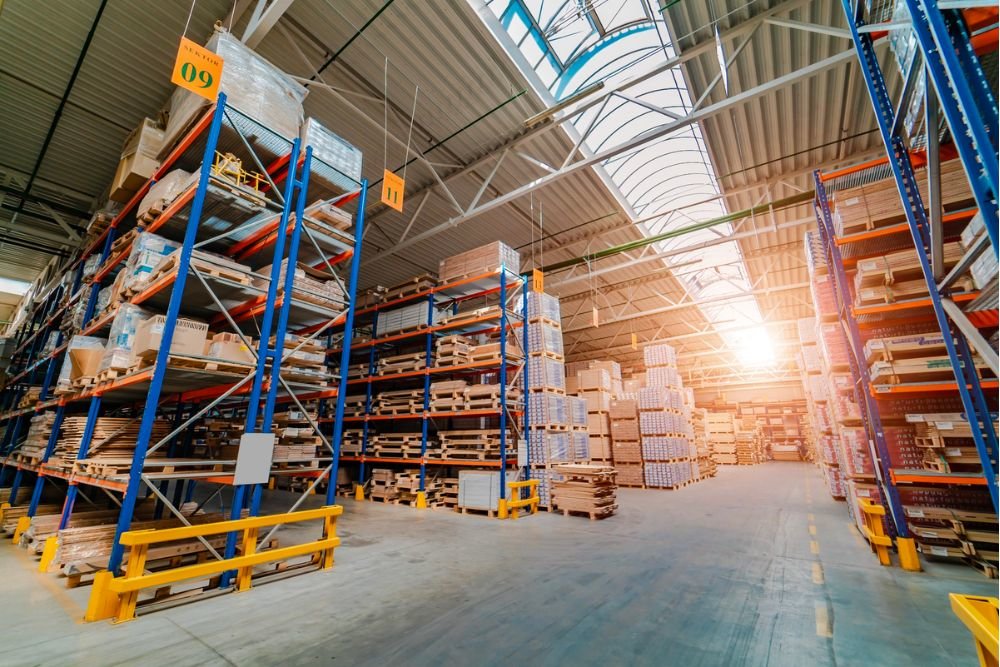Do We Need a Centralized or Decentralized Warehouse Strategy?
BlogDecember 02, 2022

Logistics is one of the most sensitive parts of global ecommerce, especially when brands work across borders. Global markets have become accessible thanks to technology, but a truly international supply chain is easier in theory than reality. Although global e-commerce sales are expected to hit $6.5 trillion in 2023, the challenges of operating an e-commerce business across borders are cumbersome enough to threaten progress drastically.
So how can you perform operations efficiently when global supply chain challenges are all-consuming? While cross-border ecommerce shows massive potential for retailers to find returns on investments, better supply chain strategies and decentralized logistics are necessary if you want to build an ecommerce infrastructure that works.
Global events and an unstable economy have put further stress on developing cross-border e-commerce trade. In many cases, retailers have been forced to switch strategies, pivot, and rethink the best uses of their budgets. Pandemic- and politics-driven shifts have been rapid and unpredictable — including transportation delays, customer service deficiencies, new government regulations, and inflation.
Consumer expectations have also shifted. They are increasingly demanding a frictionless experience and craving all the retail experiences they missed during the pandemic. However, their disposable income has shrunk, and the cost of living is anxiety-inducing. All this turmoil is causing retailers to understandably misjudge supply and demand, driving logistics costs to skyrocket and pushing the need to raise prices, which goes against consumers' needs right now.
The high cost of logistics can negatively impact other aspects of an e-commerce business and quickly decrease profit margins as high costs function to lower demand.
So what's the best way of handling cross-border logistics? Who wins the centralized vs. decentralized warehouse battle?
A direct injection shipping strategy involves packages traveling from a centralized warehouse to other destinations. In this method, local supply partners complete the journey to the customer. This means a lot of demands fall on your transportation network. In a time when the cost of the average shipping container has quadrupled, this is largely unsustainable.
However, with a decentralized warehouse, goods are stored and delivered from many warehouses scattered across your customer base. The advantages of decentralized warehouses are that the different parts of a decentralized network can talk to each other. Much like nerves in our bodies share information with our brains, eyes, and other bodily systems, these decentralized warehouses share resources or adjust inventory without needing to rely on unnecessary transportation.
A decentralized logistics network is the obvious choice for a large company with massive volumes, especially right now. Why? Thanks to decentralized warehouses, faster delivery is possible, easing consumers' anxiety and increasing profitability. A higher degree of flexibility means you can handle errors and unforeseen events with less damage. Additionally, as supply and demand inevitably fluctuate, your business can evolve quickly and without massive fees.
So how can you perform operations efficiently when global supply chain challenges are all-consuming? While cross-border ecommerce shows massive potential for retailers to find returns on investments, better supply chain strategies and decentralized logistics are necessary if you want to build an ecommerce infrastructure that works.
What Are the Advantages of a Decentralized Warehouse Network?
Global events and an unstable economy have put further stress on developing cross-border e-commerce trade. In many cases, retailers have been forced to switch strategies, pivot, and rethink the best uses of their budgets. Pandemic- and politics-driven shifts have been rapid and unpredictable — including transportation delays, customer service deficiencies, new government regulations, and inflation.
Consumer expectations have also shifted. They are increasingly demanding a frictionless experience and craving all the retail experiences they missed during the pandemic. However, their disposable income has shrunk, and the cost of living is anxiety-inducing. All this turmoil is causing retailers to understandably misjudge supply and demand, driving logistics costs to skyrocket and pushing the need to raise prices, which goes against consumers' needs right now.
The high cost of logistics can negatively impact other aspects of an e-commerce business and quickly decrease profit margins as high costs function to lower demand.
So what's the best way of handling cross-border logistics? Who wins the centralized vs. decentralized warehouse battle?
A direct injection shipping strategy involves packages traveling from a centralized warehouse to other destinations. In this method, local supply partners complete the journey to the customer. This means a lot of demands fall on your transportation network. In a time when the cost of the average shipping container has quadrupled, this is largely unsustainable.
However, with a decentralized warehouse, goods are stored and delivered from many warehouses scattered across your customer base. The advantages of decentralized warehouses are that the different parts of a decentralized network can talk to each other. Much like nerves in our bodies share information with our brains, eyes, and other bodily systems, these decentralized warehouses share resources or adjust inventory without needing to rely on unnecessary transportation.
A decentralized logistics network is the obvious choice for a large company with massive volumes, especially right now. Why? Thanks to decentralized warehouses, faster delivery is possible, easing consumers' anxiety and increasing profitability. A higher degree of flexibility means you can handle errors and unforeseen events with less damage. Additionally, as supply and demand inevitably fluctuate, your business can evolve quickly and without massive fees.

How Can You Use Decentralized Warehouses for Success?
Decentralized warehouses can serve your business well as you embark on a global e-commerce strategy, but how can you utilize this option for the best results?
Here are some practical steps you can take to find success with a decentralized warehouse network:
Start by reviewing which countries have the highest demand for your current products and where you most need to excel in terms of delivery and customer service. These are the regions in which you should set up a local warehouse.
Your decentralized warehouse network will incur additional storage costs, but you can get ahead by balancing the books now. You can start by obtaining estimates of potential costs across locations and comparing them to your shipping savings. Then, you can also work out your SKU-to-shipping volume ratio to form the best strategy for storing goods across multiple warehouses.
One of the disadvantages of a decentralized warehouse is that you'll have to take time to understand the government regulations in each location you choose. A more diverse network means you have less control over the daily management of logistics, but if you can set up a great quality control system and processes to ensure compliance, you can take back some of that control. For example, a good first step would be registering for VAT to ensure compliance in VAT-regulated areas.
Communication and service will be fundamental in getting your decentralized warehouses to work effectively. Invest in figuring out the communication channels that are most popular in your chosen location and how consumers use them. You should also invest in the speed and personalization of your customer service content and responses.
Working with a partner that can ease the challenges of strategizing in a fast-moving world will be essential. Trusted partners can help you make decisions based on real-time information and proven methods.
Our team at Go Global Ecommerce is ready to help you take your cross-border ecommerce strategy to the next level. Contact our team today to learn more about how decentralized warehouses can work for your business.
Here are some practical steps you can take to find success with a decentralized warehouse network:
1. Select your highest-demand locations
Start by reviewing which countries have the highest demand for your current products and where you most need to excel in terms of delivery and customer service. These are the regions in which you should set up a local warehouse.
2. Perform a cost comparison
Your decentralized warehouse network will incur additional storage costs, but you can get ahead by balancing the books now. You can start by obtaining estimates of potential costs across locations and comparing them to your shipping savings. Then, you can also work out your SKU-to-shipping volume ratio to form the best strategy for storing goods across multiple warehouses.
3. Take compliance seriously
One of the disadvantages of a decentralized warehouse is that you'll have to take time to understand the government regulations in each location you choose. A more diverse network means you have less control over the daily management of logistics, but if you can set up a great quality control system and processes to ensure compliance, you can take back some of that control. For example, a good first step would be registering for VAT to ensure compliance in VAT-regulated areas.
4. Focus on the human side
Communication and service will be fundamental in getting your decentralized warehouses to work effectively. Invest in figuring out the communication channels that are most popular in your chosen location and how consumers use them. You should also invest in the speed and personalization of your customer service content and responses.
Working with a partner that can ease the challenges of strategizing in a fast-moving world will be essential. Trusted partners can help you make decisions based on real-time information and proven methods.
Our team at Go Global Ecommerce is ready to help you take your cross-border ecommerce strategy to the next level. Contact our team today to learn more about how decentralized warehouses can work for your business.

